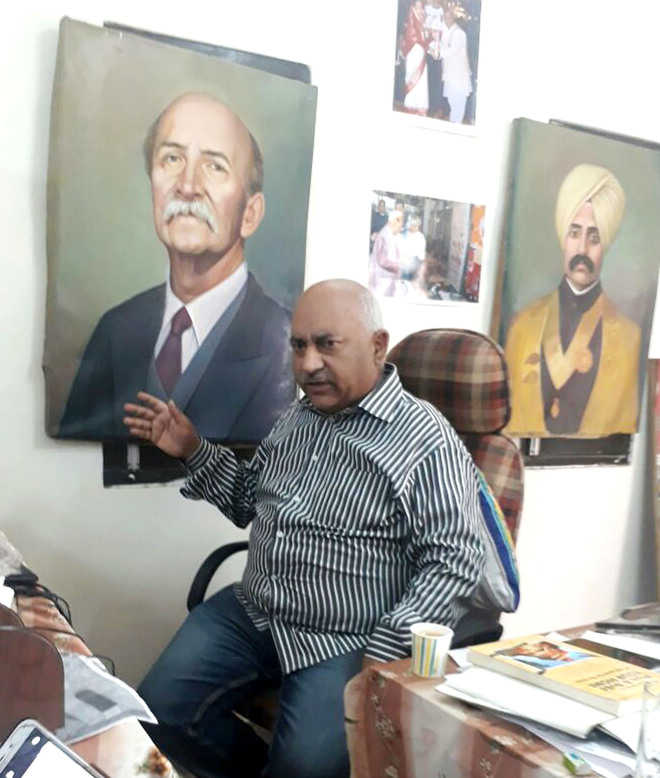Lalit Mohan
Tribune News Service
Dharamsala, July 24
The art of Pahari paintings is dying. There is no government policy in place to preserve this style of paintings. There are a few teachers of Pahari paintings left in the state and they are not in a position to pass the skill on to the next generation due to lack of government patronage.
Vijay Sharma, Padma Shri awardee painter from Chamba district, is among the few experts of Pahari miniature paintings left in the state and is known worldwide for his art. He is posted as senior artist in Chamba museum.
Taking to The Tribune, Vijay Sharma said the Kangra miniature painting style was among the most famous and unique styles of paintings in Himachal. The Languages and Culture Department had started ‘Guru Shishya’ (teacher-disciple) programme to preserve the Pahari miniature painting style.
Under this scheme, students registering as disciples were given stipends to learn the painting. The scheme had yielded some results. However, it was abruptly stopped by the government.
Vijay Sharma said he had offers from the Jammu and Kashmir Government to restore the Basholi art gallery. Many other state governments had also invited him to give lectures on miniature paintings. “Every year, some foreign students come and learn the art from me. However, ironically, I am not being able to spread the art in my own state where it has its origins,” he said.
He further said most of the work that was done to preserve the rare arts of Himachal was done at the time of former rulers of the hill state. The Chamba museum that now restores the rare heritage of former Chamba state was brought by TP Vogal, a Dutch artist under the protronage of the then ruler of Chamba state Bhuri Singh, he said.
Vijay Sharma, who has also researched into the origin of the Pahari style of paintings, said their origin dated back to the 16th century. Former Mughal ruler Akbar had given patronage to a large number of artists in Lahore. His son Jahangir later shifted the capital of Mughal empire to Agra and took with him only the accomplished artists. The remaining artists, abandoned by the Mughal court, were adopted by the rulers of the hill state where they developed their unique style of miniature paintings.
Many painters moved into the patronage of the hill state after the decline of the Mughal empire. The former ruler of Kangra hill state Sansar Chand Katoch was among the biggest proponents to Kangra miniature paintings.
Vijay Sharma said many other art forms of Himachal hills as making of brass statues in Chamba were also dying a slow death due to failure of the state government to develop any policy for protection of the art.
He said it was an irony that the Kangra state museum did not have exhibits of Kangra miniature paintings. The Chamba museum, on the other hand, had some specimens of Kangra miniature paintings.
The miniature art form of hills was unique due to the fact that colours, paper and other ingredients in it were sourced locally from natural sources. Some of the works of Kangra miniature paintings were so fine that one had to see them with magnifying lens to see the details, he said.
Unlock Exclusive Insights with The Tribune Premium
Take your experience further with Premium access.
Thought-provoking Opinions, Expert Analysis, In-depth Insights and other Member Only Benefits
Already a Member? Sign In Now










